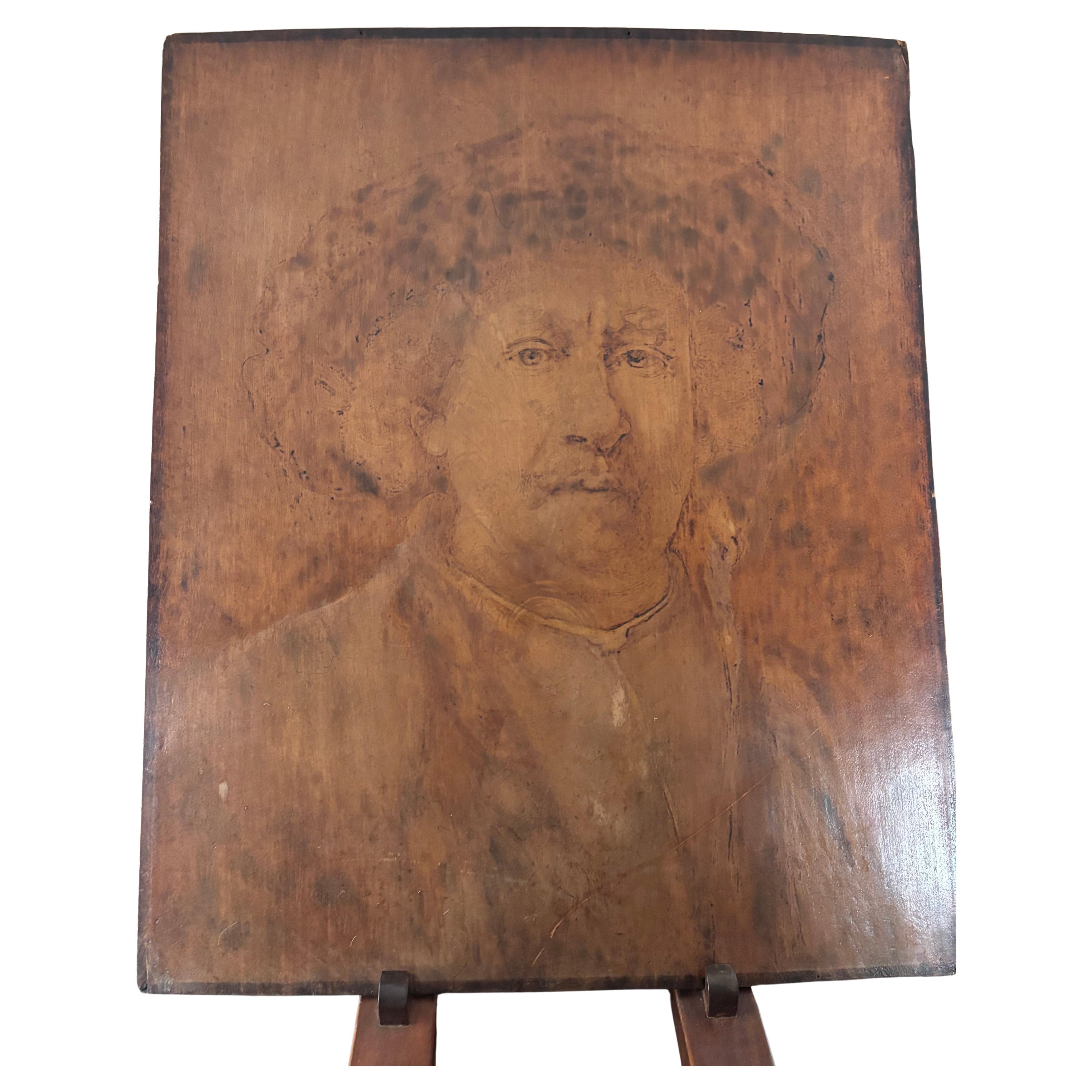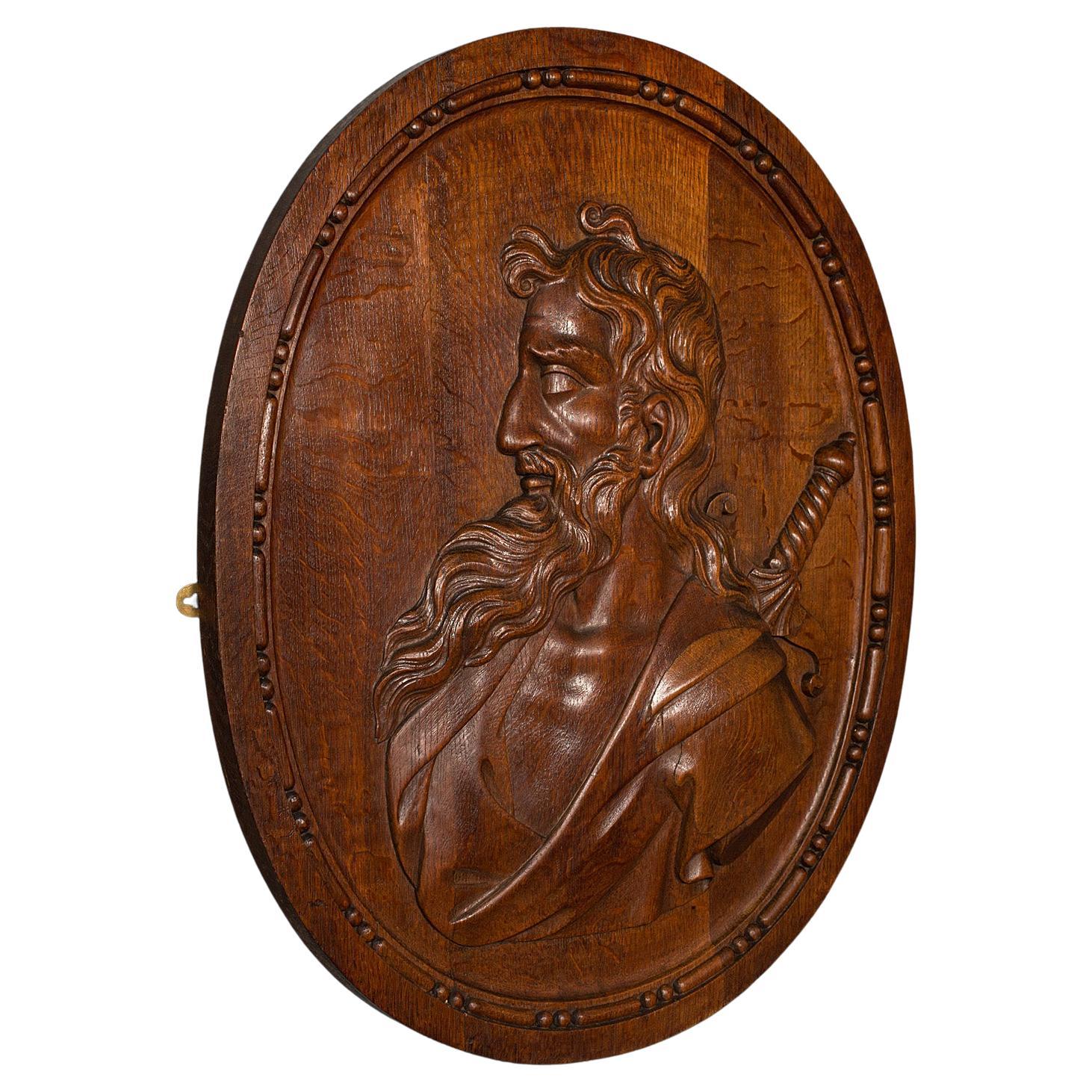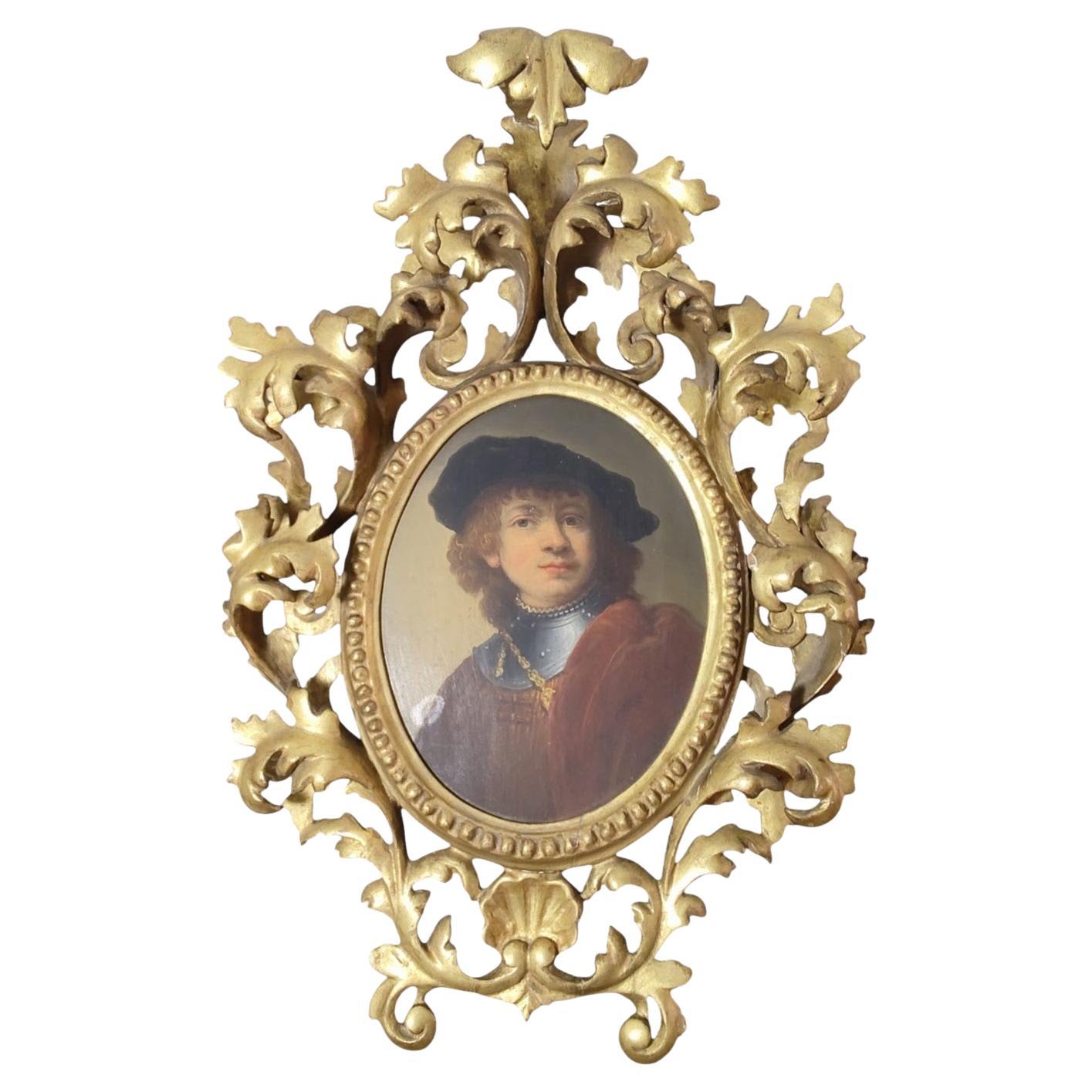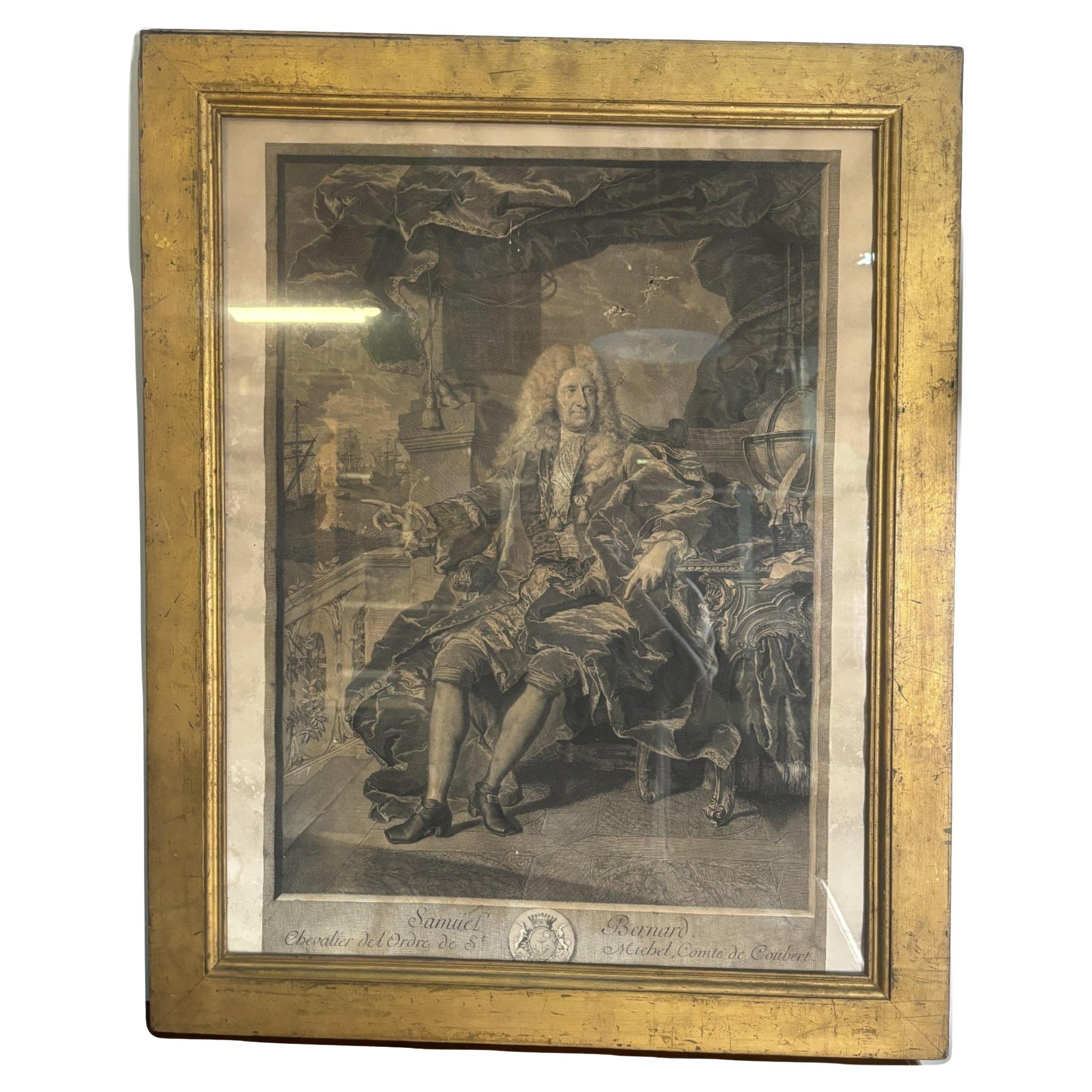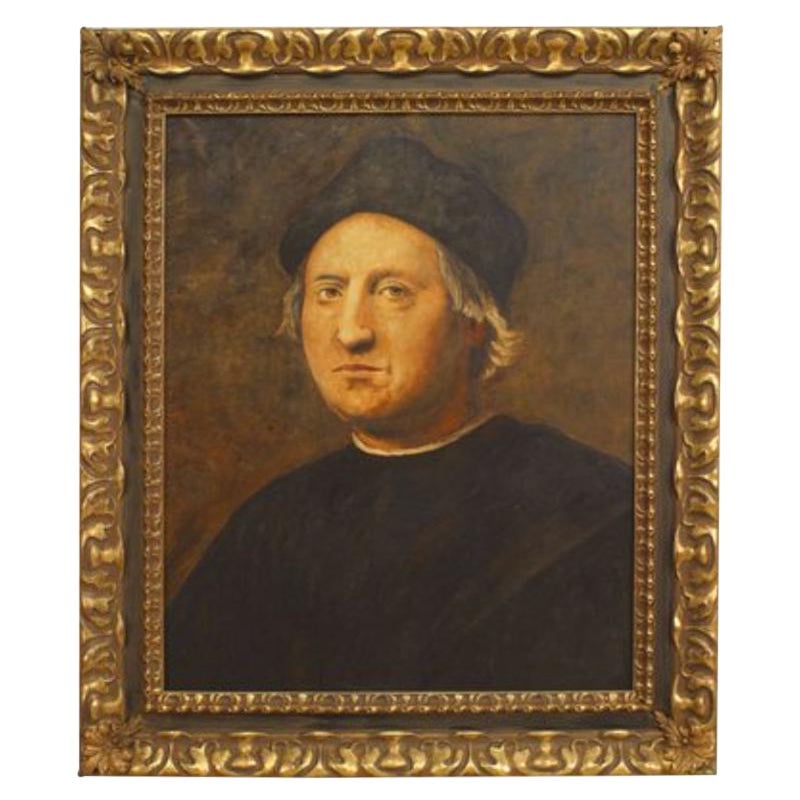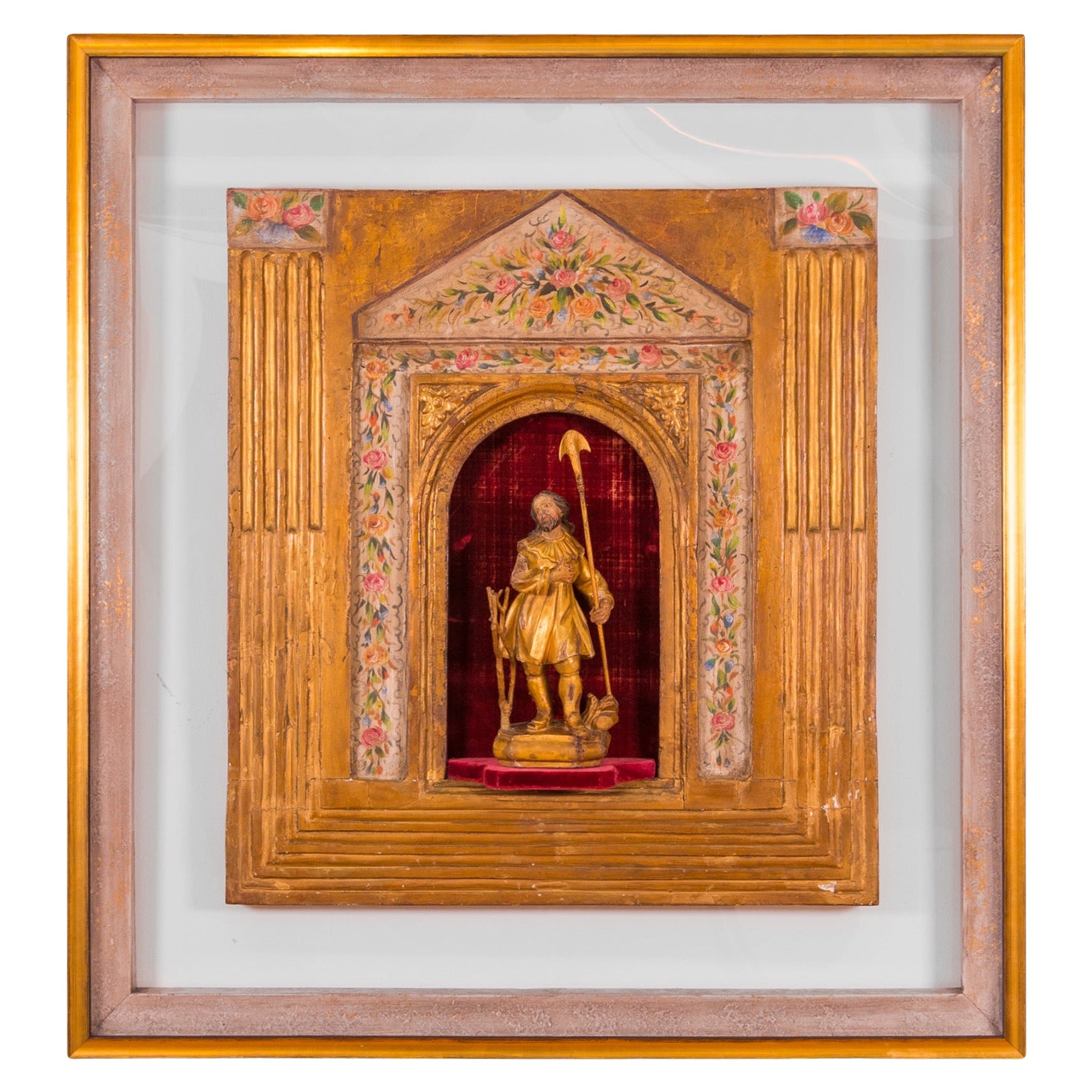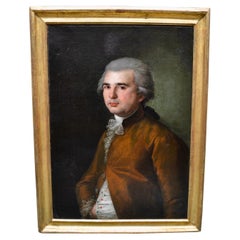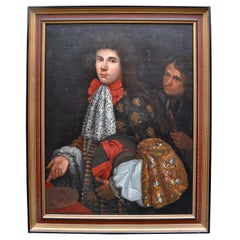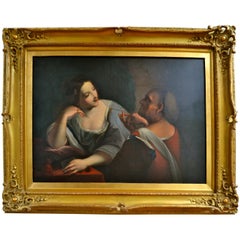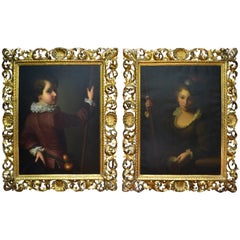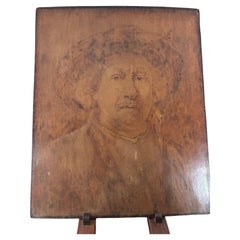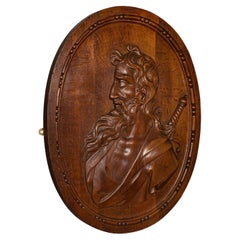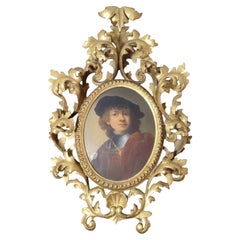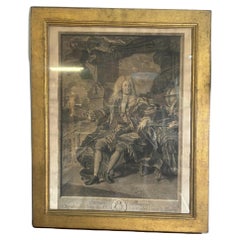Items Similar to Portrait of Christopher Columbus All Made out of in Inlaid Woods
Video Loading
Want more images or videos?
Request additional images or videos from the seller
1 of 16
Portrait of Christopher Columbus All Made out of in Inlaid Woods
$3,500
£2,642.88
€3,045.63
CA$4,939.99
A$5,446.22
CHF 2,849.29
MX$66,815.05
NOK 35,866.90
SEK 33,541.22
DKK 22,744.83
About the Item
An extraordinary rare 18th century portrait panel of what appears to be Christopher Columbus (or a classical philosopher) entirely made from various types and treatments of inlaid woods, set in a giltwood frame.
- Dimensions:Height: 31 in (78.74 cm)Width: 24 in (60.96 cm)Depth: 2 in (5.08 cm)
- Style:Baroque (In the Style Of)
- Materials and Techniques:
- Place of Origin:
- Period:
- Date of Manufacture:circa 1780
- Condition:Wear consistent with age and use.
- Seller Location:Vancouver, CA
- Reference Number:1stDibs: LU4631216067322
About the Seller
4.9
Vetted Professional Seller
Every seller passes strict standards for authenticity and reliability
Established in 1981
1stDibs seller since 2019
163 sales on 1stDibs
Typical response time: 1 hour
- ShippingRetrieving quote...Shipping from: Vancouver, Canada
- Return Policy
Authenticity Guarantee
In the unlikely event there’s an issue with an item’s authenticity, contact us within 1 year for a full refund. DetailsMoney-Back Guarantee
If your item is not as described, is damaged in transit, or does not arrive, contact us within 7 days for a full refund. Details24-Hour Cancellation
You have a 24-hour grace period in which to reconsider your purchase, with no questions asked.Vetted Professional Sellers
Our world-class sellers must adhere to strict standards for service and quality, maintaining the integrity of our listings.Price-Match Guarantee
If you find that a seller listed the same item for a lower price elsewhere, we’ll match it.Trusted Global Delivery
Our best-in-class carrier network provides specialized shipping options worldwide, including custom delivery.More From This Seller
View All18th Century Portrait of a French Aristocratic Gentleman
Located in Vancouver, British Columbia
A fine half length portrait of a powder wigged 18th century French aristocratic gentleman simply dressed in a brown waistcoat over an embroidered buttoned vest in which he has placed...
Category
Antique Late 18th Century French Louis XVI Paintings
Materials
Canvas
19 Century English Portrait of an Aristocratic Gentleman in the Manner of Rubens
By Peter Paul Rubens
Located in Vancouver, British Columbia
A 19th C three quarter length portrait of an aristocratic gentleman with his personal valet shown behind him. The young man with flowing long hair is portrayed from the waist up and ...
Category
Antique Mid-19th Century English Renaissance Paintings
Materials
Canvas
Italian Baroque Style Painting of Beauty and Old Age attributed to R. Manchetti
Located in Vancouver, British Columbia
An old master style 18th century allegorical painting representing youth and old age, and/or beauty and wisdom, depicted by a beautiful young ...
Category
Antique Mid-18th Century Italian Baroque Paintings
Materials
Canvas
Pair of Paintings Depicting Pilgrims of Compostela After Grimou
Located in Vancouver, British Columbia
A complementary pair of 19th century Italian paintings in the "chiaro scuro" style depicting pilgrims gazing intently with a certain degree of sentimental...
Category
Antique Mid-19th Century Italian Baroque Paintings
Materials
Canvas
$8,000 Sale Price / set
33% Off
19 Century Grand Tour Bronze Neoclassical Bas-Relief
Located in Vancouver, British Columbia
A Grand Tour heavy bronze bas-relief of a classical scene showing a retinue of six figures consisting of two nude standing males and three classically draped maidens including Athena...
Category
Antique Late 19th Century Italian Neoclassical Wall-mounted Sculptures
Materials
Bronze
$600 Sale Price
20% Off
Pair of 18 Century Paintings of St Francis Xavier and St Carlo Borromeo
Located in Vancouver, British Columbia
A beautifully executed and rare complementary pair of oil on canvas paintings depicting two of the moist famous and important counter reformation catholic saints St Francis Xavier and St Carlo Borromeo shown in scenes of what the respective saints are mostly famous for. St Francis Xavier for the conversion to Christianity of many S. E Asian countries notably India and St Carlo Borromeo shown asking the Virgin Mary to intercede for the cessation of the terrible plague of 1576. The paintings are presented in refreshed gilded carved wooden frames and are unsigned.
St. Francis Xavier was born in Spanish Navarre in 1506 and in 1528, he met St. Ignatius of Loyola. He became one of the seven in 1534 who founded the Society of Jesus (Jesuit Order). In 1536, he left the University of Paris and joined St. Ignatius in Venice. He was ordained in 1537, and in 1540 after the Society was recognized by the Pope, he journeyed to the Far East. Francis Xavier first evangelized the Portuguese colony of Goa in India, then Travancore, Ceylon, Malacca, and the surrounding islands. From there he journeyed to Japan, where he gave Christianity such deep roots that it survived centuries of violent persecution. He died on Sancian Island in 1552, while he was seeking to penetrate into the great forbidden land of China.
Despite language problems, lack of funds, resistance from the Europeans as well as the natives, he persevered. St. Francis converted more people in his life than anyone since the Apostle St. Paul. He baptized over 3 million people, converted the entire town of Goa in India, and he labored in India, Pakistan, Bangladesh, Sri Lanka, Malaysia, Indonesia, Singapore, and Japan. He was truly a missionary par excellence.
St Carlo Borromeo (1538-1584), was a Cardinal of the Holy Roman Catholic Church and Archbishop of Milan from 1565 to 1583. He was described in the decree for his canonization, as “a man, even while the world smiles on him with the utmost flattery, he lives crucified to the world, spiritually, trampling earthly things, seeking continuously the things of heaven, emulating the life of the Angels on earth, in his thoughts and actions.
The plague began in the month of August that year. Milan was celebrating joyfully the arrival of Don John of Austria, on his way to Flanders, where he had been appointed governor. The city authorities were abuzz with excitement in their desire to bestow the highest honours on the Spanish prince, but Charles, who had been Archbishop of the diocese for six years, was following with concern the news coming from Trento, Verona and Mantua, where the plague had begun claiming victims. The first cases exploded in Milan on August 11th, right at the moment when Don John of Austria arrived. The victor of Lepanto, followed by the governor, Antonio de Guzmán y Zuñiga, departed the city, while Carlo Borromeo, who was in Lodi for the Bishop’s funeral, returned in haste.
Confusion and fear reigned in Milan and the Archbishop dedicated himself completely to assisting the sick and ordering public and private prayers. Dom Prosper Guéranger sums up his infinite charity in this way: “In the absence of local authorities, he organized the health service, founded or renewed hospitals, sought money and provisions, decreed preventive measures. Most importantly though, he took steps to ensure spiritual help, assistance to the sick and the burial of the dead. Unafraid of being infected, he paid in person, by visiting hospitals, leading penitential processions, being everything to everyone, like a father and true shepherd”
St. Carlo was convinced that the epidemic was “a scourge sent by Heaven” as chastisement for the sins of the people and that recourse to spiritual measures was necessary to fight against it: prayer and penitence. He rebuked the civil authorities for having placed their trust in human measures rather than divine ones. “Hadn’t they prohibited all the pious gatherings and processions during the time of the Jubilee? For him, and he was convinced of it, these were the causes of the chastisement. The magistrates who governed the city continued to oppose public ceremonies, out of fear that the large gathering of people would spread contagion, but Charles “who was guided by the Divine Spirit” – recounts another biographer – convinced them by citing various examples, among which was the one regarding St. Gregory the Great who had halted the plague devastating Rome in 590.
While the pestilence spread, the Archbishop then ordered three general processions to take place in Milan on the 3rd, 5th and 6th of October, “to placate the wrath of God”. On the first day, the Saint, despite it not being the Lenten season, placed ashes on the heads of the thousands gathered, exhorting them to penitence. Once the ceremony was over, the procession went to the Basilica of St. Ambrose. Charles put himself at the head of the people, dressed in a hooded purple robe, barefoot, penitential cord at his neck and large cross in his hand.
The second procession led by the Cardinal headed towards the Basilica of San Lorenzo. The third day the procession from the Duomo headed for the Basilica of Santa Maria at San Celso. St. Carlo carried in his hands a relique of Our Lord’s Holy Nail, which had been given by the Emperor Theodosius to St. Ambrose in the 5th century.
The plague didn’t show any signs of waning and Milan appeared depopulated, as a third of its citizens had lost their lives and the others were in quarantine or didn’t dare leave their homes. The Archbishop ordered about twenty stone columns with a cross at the top to be erected in the main squares and city crossroads, allowing the inhabitants from every quarter to take part in the Masses and public prayers - from the windows of their homes. One of Milan’s protectors was St. Sebastian, the martyr the Romans had recourse to during the plague in 672. St. Charles suggested that the magistrates of Milan reconstruct the sanctuary dedicated to him, which was falling into ruins, and to celebrate a solemn feast in his honour for ten years. Finally in July 1577, the plague ceased and in September the founding stone was laid in the civic temple of St. Sebastian, where on January 20th every year, even today a Mass is offered to recall the end of the scourge.
St.Carlo Borromeo died on November 3rd 1584 and was buried in the Duomo of Milan. His heart was solemnly translated to Rome, in the Basilica of Saints Ambrose...
Category
Antique Late 18th Century French Baroque Paintings
Materials
Canvas
You May Also Like
American Arts And Crafts Antique Pyrography Kingsley Portrait After Rembrandt
Located in South Burlington, VT
A sensitive and superb antique Arts and crafts pyrography portrait of a Rembrandt gentleman.
This is a beautiful hand incised image “After Rembrandt” hand created by Norman Kingsle...
Category
Antique 1890s American Arts and Crafts Paintings
Materials
Wood
Large Antique Carved Portrait, Italian, Oak, Decorative Relief Panel, Victorian
Located in Hele, Devon, GB
This is a large antique carved portrait. An Italian, oak decorative relief panel, dating to the late Victorian period, circa 1900.
Of superb proportion and wonderful craftsmanship
D...
Category
Antique Late 19th Century Italian Late Victorian Decorative Art
Materials
Oak
Antique 19th century hand painted self-portrait, wooden frame
Located in Ciudad Autónoma Buenos Aires, AR
Hand painted with great delicacy, based on the self-portrait. Oil on a richly decorated Rococo style gilded wooden frame.
Category
Antique Late 19th Century Italian Rococo Paintings
Materials
Wood
$2,800 Sale Price
20% Off
Portrait of Samuel Bernard 1729
Located in Los Angeles, CA
Samuel Bernard, Chevalier de l'ordre de Saint Michel, comte de Coubert
Portrait of Samuel Bernard, Counselor of State by Pierre Imbert Drevet.
1729
Category
Antique 18th Century French French Provincial Decorative Art
Materials
Other
Spanish Explorer Portrait
Located in Queens, NY
Copy of a portrait painting of the Spanish explorer Columbus in Black cape and coat
Category
Late 20th Century American Renaissance Paintings
Materials
Paint
16th Century, Saint Isidore, Patron of Farming and Gardening, Carved-Wood
Located in North Miami, FL
16th Century Spanish carved-wood and polychromed sculpture and altar of Saint Isidore, Patron of Farming and Gardening. He is standing in a red velvet line niche. The altar is adorne...
Category
Antique 16th Century Spanish Renaissance Wall-mounted Sculptures
Materials
Gold Leaf
More Ways To Browse
C Jere Metal Sculpture
Carved Plaque French
Face Wall Sculpture
French Bas Relief
Iznik Antique
Ceramic And Fiber Wall Sculpture
Jere Copper Wall Sculpture
Bronze Metal Wall Sculpture
Hanging Ceramic Sculptures
Vintage Ceramic Wall Hanging
Flower Wall Sculptures
Iznik Pottery
Bas Relief Wall Sculpture
Wood Deer Mount
Brass Wall Plaque
Chinese Wall Plaques
Hanging Metal Wall Sculpture
Ceramic Persian Tile
